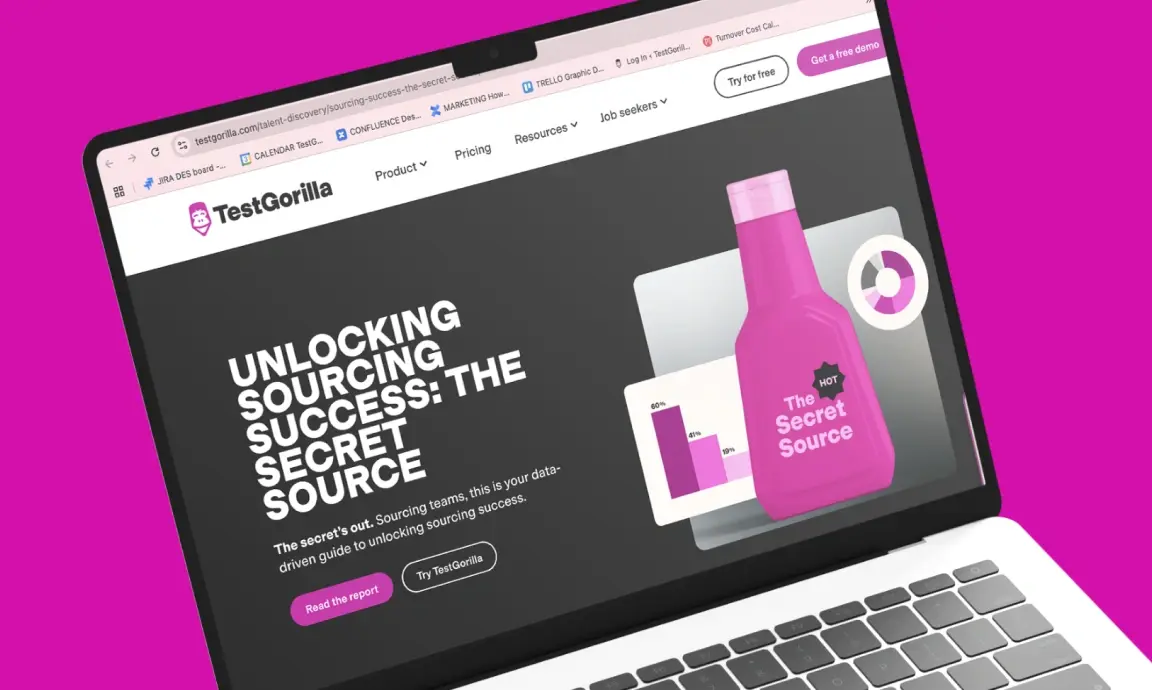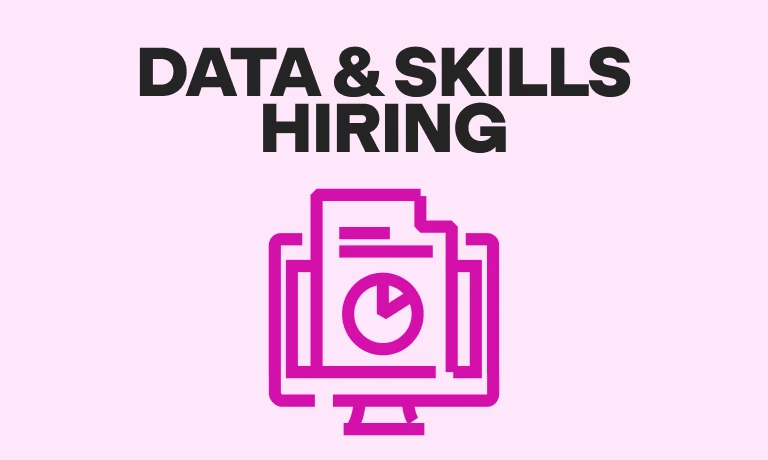Inclusivity and diversity are hot topics, now more than ever. And with good reason. Aside from the important moral argument, McKinsey’s 2015 research clearly shows that companies in the top quartile of gender and ethnic diversity are 25% more likely to perform above national industry medians. But a diverse workplace isn’t necessarily an inclusive workplace.
If you simply hire employees from diverse backgrounds and leave it at that, it doesn’t guarantee that everyone will feel equally welcomed, appreciated, and accepted. Instead, you need to rally for creating a truly inclusive workspace, where everyone feels valued for their unique perspectives.
Some of the most successful international companies, such as Accenture, L’Oréal, and Lenovo, have made it a priority to create a diverse, inclusive, and supportive workspace. How can you do the same?
Why is inclusivity important?
Inclusivity is the morally right thing to do—but that’s certainly not all there is to it. Prioritizing inclusiveness leads to a number of advantages that translate into business results that will help your company get ahead of competitors and perform better.
Here are a few examples of how making inclusiveness a priority will help your company.
Reduces turnover
Turnover is costly, and fostering inclusive relationships at the workplace is one of the best tactics to reduce turnover, according to a study by The Center for Advanced Human Resource Studies at Cornell University. So creating a safe, inclusive workplace is one of the first things that you should look into if you’re aiming to minimize turnover and retain talent. If employees feel truly accepted and appreciated for who they are and for the value they bring to the table, they’re less likely to feel the need to look for opportunities outside your company.
Improves decision making
Inclusive workplaces lead to better decisions overall. Employees feel more motivated to participate in the decision-making process and be more involved and active. If they know that the company’s leaders can and will accept different opinions, employees will be more willing to express their concerns. And the HR manager’s role is to make sure they’re heard.
Leads to better teams
Team dynamics play an essential role in companies’ performance. If some team members are feeling excluded and underappreciated, this will definitely impact the team as a whole and will create a negative interpersonal dynamic. But for companies that successfully prioritize inclusiveness, everyone feels accepted and safe, this dramatically improves communication, engagement, and trust.
Increases team cohesion and engagement
People get along better in an inclusive workplace where they feel included and supported. An inclusive team that supports individual team members and appreciates them for their skills and expertise, regardless of differences, will perform better.
Which leads us to the next point:
Enhances performance
Happier employees perform better. 20 to 37% better, in fact. Creating a safe and inclusive environment will boost employee satisfaction tremendously.
Makes it easier to attract and retain top talent
Inclusive companies, where everyone feels a sense of belonging, are better able to attract and retain top talent. By creating an environment where everyone feels valued, you’ll be less likely to lose top talent to other companies where they feel more appreciated. And people outside of your organization will be able to see that your company is doing the hard work necessary to create a welcoming workplace where they can thrive.
Better brand image
Inclusivity is key to not only attracting employees but customers as well. Consumers are more aware of the business practices of the companies they buy from these days. Whether your company makes a point of creating a diverse and inclusive workplace will have a greater impact on your brand image than ever before.
What makes it difficult to create an inclusive workplace?
Creating an inclusive workplace isn’t simple—it requires constant effort and involvement from everyone. There are also a few major challenges to prepare for.
Interviewer and hiring bias
Interviewer bias is an obstacle to diversity. When it comes to making internal hires, this can damage your efforts to create an inclusive workplace. You might not even be aware of it: a big part of our biases are unconscious. Gender and racial bias, similarity bias, stereotyping, generalization—among others—are not easy to get rid of.
You can work to reduce the impact of bias by anonymizing a part of your hiring process, testing candidates’ skills before you interview them, and doing structured (as opposed to freeform) interviews.
People naturally tend to form groups
People tend to form groups based on similarities and common interests, and that’s natural. This isn’t a bad thing on its own, but it can make somе team members feel excluded, and contribute to a negative group dynamic. In addition to that, organizational silos within companies hinder progress and promote exclusivity, rather than inclusivity.
The solution is not to break up friendships that happen naturally, but rather, to strive to engage everyone, and give everyone the same access to resources and information.
Subtle biases and discrimination still exist in many companies
Even if your organization is diverse, that doesn’t necessarily make it inclusive—and it also doesn’t make it immune to subtle discriminatory practices and biases.
Beyond hiring, you need to look at promotions, turnover, and access to resources to see if you can identify any patterns that might indicate discrimination. For example, some employees might be excluded from important conversations, managers might prefer to promote employees who are similar to them, and so on.
The best insights on HR and recruitment, delivered to your inbox.
Biweekly updates. No spam. Unsubscribe any time.
How can companies create a more inclusive work environment?
There are a number of ways to foster diversity and inclusion in the workplace—and each organization’s starting position and needs will be slightly different.
Analyze where you stand
Start with gathering and analyzing data. Observe trends and interview employees in order to:
Detect hiring patterns and potential hiring biases
Analyze your employees’ access to training
Study who gets promoted and why
See how your employees actually feel, and whether they themselves feel included and appreciated.
Once you have the data, it’ll be much easier to see where your blind spots are and to improve based on that data.
Keep in mind that smaller teams might be less diverse at first until they get a chance to grow and diversify. That doesn’t mean they have to be less inclusive. Iinclusivity isn’t only related to sex, age, ethnicity, or religion. Look into the subtle details like people who have different political views or working styles who might feel excluded.
Check your hiring process for biases and discrimination
The hiring process is one of the first places where you should be on alert for biases and discrimination. Diversity and inclusivity need to be a priority right from the start of an employee’s journey with your company. After all, the people you hire are the same people who will be driving the company forward, and their beliefs and values are directly related to your company culture.
In that context, skills tests can be a precious resource, which you can use to make better hiring decisions. They can help you improve your hiring process, eliminate bias, and hire based on applicants’ skills and knowledge.
Make inclusion a priority and a pillar of your company culture
Make inclusion a priority, and communicate that with the whole team. Articulate your goals clearly and explain why inclusion is important, and what you’re hoping to achieve—both short- and long-term.
In order to make meaningful changes, it’s important to create an actionable plan, involve everyone, and set measurable objectives for inclusion and diversity. Abstract ideas won’t get you far if they don’t translate into specific actions.
Set objective performance standards
Be transparent about performance goals, promotions, and bonuses, and set clear requirements about every position. If someone knows exactly what they need to do in order to grow within your company, and have enough available information and resources on how to achieve that, they’ll be much more motivated and engaged.
In addition to that, it’s important to measure your progress. One of the ways to do that is to create a questionnaire for employees where you can ask about instances where they have felt excluded and track these incidents.
It’s important to keep in mind that employees might not always feel comfortable talking about that directly, so consider anonymizing the questionnaire. You should also allow for one-on-one feedback from employees. Make it a priority to actively listen to what they have to say and ask open, unbiased questions to dig deeper.
Welcome dialogue and open expression
When employees feel excluded, they might try to conceal the traits that make them different, in order to integrate better. To counteract that, you need to make sure that your workplace is a safe space for everyone on board. Celebrate differences and encourage team members to speak about their backgrounds, experiences, and cultures.
Employees appreciate the opportunity to openly express their concerns and opinions. So encourage and nurture dialogue, and let everyone speak up during meetings.
Lead by example
Change needs to be embraced and promoted by the company’s leadership, HR managers, and mid-level managers. Indeed, in the past few years, the priorities of companies’ leaders have clearly shifted towards inclusivity.
A Deloitte study from 2017 shows that over 69 percent of executives see inclusion and diversity as an important issue, which is a 10 percent increase, compared to 2014.
Leaders need to be able to clearly communicate the company’s priorities, and the role of hiring managers is critical in that. Educating managers and holding them accountable is an important element to inclusion.
Prioritize inclusiveness to improve performance
Inclusion and diversity should be on top of your agenda—especially if your company is struggling with turnover and organizational silos. Leaders and hiring managers have the responsibility to make inclusion a priority and create a meaningful plan on how to achieve change because a welcoming work environment stimulates creativity and innovation, and, ultimately, leads to better business performance.
Related posts
You've scrolled this far
Why not try TestGorilla for free, and see what happens when you put skills first.


















